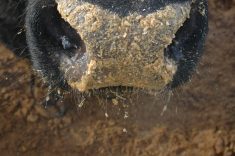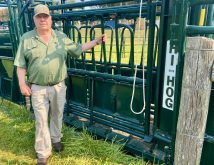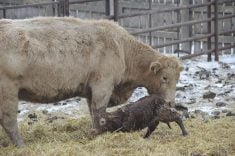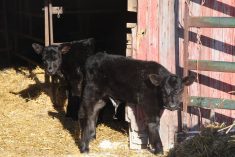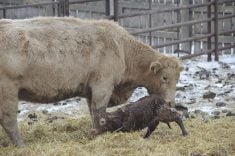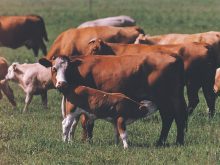An understanding of body position relative to the animals called key to reducing pressure and keeping the situation calm
Low-stress cattle handling is a lot like geometry.
“It’s all about position, distance and angles,” said Lee Sinclair of Merck Animal Health.
“Probably one of the biggest mistakes that we make and that I made back in the day was nobody told us position, distance, angle and speed makes a difference.
“What we were shown a lot of times was get in behind, put more pressure on and push harder. And that’s the wrong way to do it,” said the company’s senior sales representative in Saskatchewan.
Read Also

New coal mine proposal met with old concerns
A smaller version of the previously rejected Grassy Mountain coal mine project in Crowsnest Pass is back on the table, and the Livingstone Landowners Group continues to voice concerns about the environmental risks.
Sinclair is part of Merck’s Creating Connections, an online cattle handling program that provides assistance for low-stress cattle handling, including public demonstrations and training clinics.
Like people, cattle can be uncomfortable when someone is walking behind them.
“If we’re talking to somebody and they walk around and then stand behind us, we want to turn and see what they’re doing. The same thing happens with cattle. They want to see us, their source of guidance,” said Sinclair.
“What we want to do is work from the front, show the animals where we want them to go and ask them to go by us and into the place we want them to go. So we’re pressuring more from the side versus getting in behind.”
Sinclair said an understanding of body position relative to the animals is key to reducing pressure and keeping the situation calm.
“One of the mistakes we make is we’re in a rush. Maybe the trucks are coming to move the cattle and so we don’t take our time. We don’t talk with the crew on the expectations, where we’re going and how we’re going to do it effectively,” he said.
“We’ve got different people with different skill sets, all at different levels and we haven’t communicated to them properly on what our objective is and how we’re going to do it.”
Before entering a pen or pasture of cattle, identify the animals that are more heads-up, aware and sensitive to pressure, he advises.
“Those are the individuals that we have to work with. They don’t trust us so their heads are up. So if we make a wrong move, they’re going to take off. … That starts motion, and can draw the motion of the rest of the herd.”
Instead, stop and then change position, possibly by backing up to release the animals’ feelings of pressure. Wait for the heads to drop before proceeding.
Sinclair said he learned this technique the hard way.
“When I started, I didn’t know that. So I would just go walking in there and then can’t figure out why the cattle are all riled up. It’s because I didn’t listen to their communication to me when that head comes up.
“Now I can slow it down a little bit, stay to the front and to the side, and get that one (animal) confident in me to come by me. I can work with that animal that’s got its head up and ask that individual to go first. And as it goes, it starts to lead the other animals. But I’ve got to build that trust first.”
However, with more than a 300 degrees field of vision, all cattle are aware the handler is standing at the gate or in the pasture.
“If we can see their eye, they can see us. Their ear(s) will also be pointed to where their focus is,” he said.
Sinclair said cattle will usually indicate which side they want to be approached from and often it’s the left.
“Anything that they see in their left eye is read on the right side or the thinking side of the brain. Anything that goes in the right eye is read on the left side of the brain, which is the reactionary side.
“So generally, the first time we meet those animals, they’ll want us on their left side, not their right side.”
Cattle want to keep an eye on handlers and if they can see the desired destination at the same time, so much the better.
“It’s that position, distance, angle.”






